With fatalities rising fast, NHTSA has enacted rules requiring the use of sophisticated detection and auto-braking technologies intended to protect pedestrian – as well as those riding bicycles and motorcycles. But automakers are pushing back, claiming they can’t meet the new mandates set to go into effect in 2029.
An average 7,000 pedestrians have been struck and killed in motor vehicles accidents over the last five year, according to a new report by the Governors Highway Safety Association, which noted that such fatalities are up 77% since 2010.
Federal safety regulators have stepped in and now want automakers to upgrade the forward collision warning technology today found on virtually all new vehicles. A growing number of them already have the capability of braking automatically if a driver doesn’t react quickly enough. But, in a final rule published last month, the National Highway Traffic Safety Administration takes things a big step further, requiring the technology operate at speeds up to 90 mph, day or night.
Manufacturers are pushing back, however, an industry trade group this week calling for a rollback of the new rules, claiming the standards are “practically impossible with available technology.”
Pedestrian deaths
Highway deaths, in general, have been on the rise in recent years, safety experts blaming a variety of issues, including drugged and drunk driving, distracted driving, lax law enforcement and even the rise of the modern SUV with its added mass and blunt front end.
The latter factor has taken blame in one particular area, the GHSA report noting that, “Since 2010, pedestrian deaths have increased by 77%, compared to a 22% rise in all other traffic fatalities.”
Pedestrian fatalities did drop by 5.4% in 2023 – but they’re still up 14.1% compared to 2019, the last year before COVID.
The new rule
Officially known as FMVSS 127, the final rule is designed to make use of new technologies, including camera and radar sensors. They’ve become commonplace on the road today. Effectively, all new vehicles now are capable of spotting potential collisions with other vehicles and, at the very least, sounding an alarm to alert the driver. More advanced versions add Automatic Emergency Braking, or AEB, which will attempt to stop the vehicle if a motorist doesn’t immediately respond.
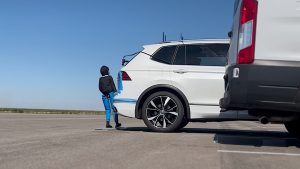
Automakers have already added a number of technologies to reduce pedestrian crashes, including systems that can automatically brake if someone walks behind a vehicle as it backs up.
The most advanced systems not only detect potential collisions with another vehicle but can respond to pedestrians, bicycles, motorcycles and, in some instances, even larger animals.
Under the new mandate, automakers have until 2029 to up the capabilities of those technologies substantially so that they:
- Can detect a potential collision with another vehicle and apply the brakes at speeds up to 90 mph, mitigating the severity of a crash. At up to 62 mph, the technology must prevent a crash entirely;
- If a pedestrian is detected, the brakes must be applied at speeds up to 45 mph;
- The technology must be capable of detecting pedestrians day or night.
More Safety News
- Highway Fatalities Fell in 2023 – But are Still Higher than Pre-COVID
- IIHS Tightens Rules for Top Safety Pick Awards
- Tesla Autopilot has “Critical Safety Gap,” Says NHTSA
Automakers push back
There’s little doubt the new rules would require technological innovation. The effectiveness of current automatic emergency braking systems can vary widely. But all, in general, are less effective at night and in bad weather conditions, data shows.
Several automakers, including General Motors, Toyota and Volkswagen, are pushing back, saying they simply can’t accomplish what NHTSA wants – at least not without adding significant costs to the average motor vehicle. That’s a particularly topical concern considering that today’s vehicles are now at or near record prices.
The Alliance for Automotive Innovation, a trade group representing key automakers operating in the U.S., this week issued a statement calling on NHTSA to reconsider FMVSS 127, citing its “impracticability.”
In a letter to Congress, the group’s CEO John Bozzella said there was a “breakdown” in the rulemaking process, adding “NHTSA’s action will require more costly systems that won’t improve driver or pedestrian safety.”
If anything, manufacturers contend the aggressive actions that future vehicles would need to take to comply with the 2029 standards could actually cause crashes with vehicles not equipped with the new technology.
The other side
If anything, the new standards should be made even tougher, Cathy Chase, president of Advocates for Highway and Auto Safety.
“Unfortunately, the auto industry consistently uses added costs when it fights requirements for safety systems as standard equipment,” Chase told Axios, “like it did for rearview cameras and is now proffering for safer braking systems.”
For her part, Stephanie Brinley said she’s not surprised by the concerns raised by the auto industry. “Automakers push back on rules often,” Brinley, the principal auto analyst with S&P Global Mobility, told Headlight.News. “It’s part of the process.”
Brinley agrees with safety advocate Chase that automakers often say “the sky is falling” when new standards are enacted. But she also notes that citing today’s available technology is misleading. What’s in cars now wasn’t available five years ago, in many cases. Or it originally cost more, only to see that come down with volume production.
While she’s not ready to say whether NHTSA has gone too far this time, Brinley noted that, despite the routine industry opposition, “safety standards usually get met.”




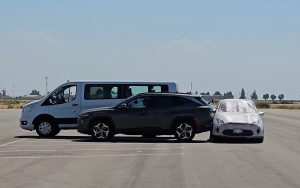

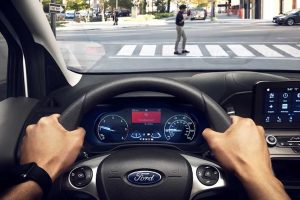

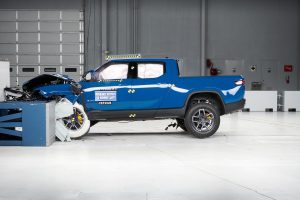
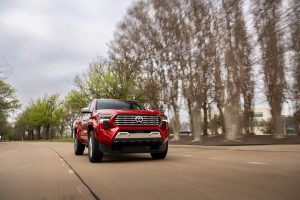




0 Comments